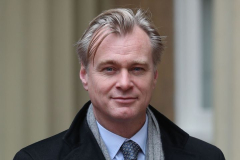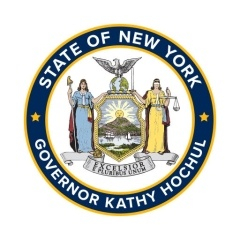By Gunnar Lindstrom
Husqvarna is not only one of the oldest motorcycle makers in the world, it’s one of the oldest continuously operated manufacturing operations of any kind. Prior to building its first motorcycle in 1903, the mill at Huskvarna, Sweden, produced firearms and other goods dating all the way back to the 17th century. But, can you realistically say that the Husqvarna of 2025 is the same company that produced muskets for King Charles XI of Sweden in 1689? No motorcycle maker has such a complicated and serpentine history. It’s a story of stunning success, dark chapters and forgotten years. Here’s a brief overview of one of the greatest legacies in the motorcycle world.

THE RISE OF HUSQVARNA MOTORCYCLES
As with most motor companies of the early 20th century, Husqvarna Moto’s formative years were interrupted by World Wars and huge economic swings. Some of those initial products were more bicycle than motorcycle; others were produced in partnership with other factories of the time. Through all of this time, the company’s sewing machine line was the biggest part of a multi-faceted business. It wasn’t until after World War II that the motorcycle company we know today began to develop its own distinct personality. In 1955, Husqvarna introduced a new, lightweight, 175cc motorcycle that they called “Silverpilen,” or “Silver Arrow.” It was a huge hit because it was under 166 pounds and could therefore be ridden by 16-year-olds. It was light and fast, and although originally designed as a road bike, it could easily be modified for the new sport of motocross. The factory built a few test bikes with better suspension and a full 250cc engine, and Rolf Tibblin was immediately successful on this bike. He became the European champion in 1959. Torsten Hallman soon joined the team and won his first 250 World Championship in 1962.
These race bikes were not authorized by the corporate board and therefore built in a sort of factory underground. Some of the work was done after hours, under the table and paid for by either sewing machine or chainsaw accounts. The bikes and their riders were popular all around the factory and it was relatively easy to get help from the various departments, such as machining and heat treatment. As opposed to the dreary regular routine, employees thought it was fun and exciting to help support the race team in a sort of secret and underground way. And some riders would occasionally stop and talk, especially Rolf Tibblin when he was test riding a bike, and doing wheelies up and down the entrance road.
The successes of the motocross team and their underground operation created great PR for Husqvarna, and eventually convinced the corporate board that for 1963, 100 MX bikes could be built using Silverpilen leftover parts, such as wheel hubs, fuel tanks and frames, sitting in warehouses.
So for 1963, motocross motorcycles became an official Husqvarna product, although only 100 were made. Torsten Hallman said they were the most competitive motocross bikes available at that time, partly because of their low weight. All of them sold easily. And such was the success that the board allowed the newly created motorcycle group to make another 200 for 1964. Now, Husqvarna was officially back in the motorcycle business. In 1965, the motocross bikes were profitable and sales increased steadily, partly due to Edison Dye convincing the factory to sell bikes in the U.S. in 1966. The factory had been reluctant to sell motocross bikes to a country where there was no motocross. That was the official line.
The addition in 1967 and ’69 of the very successful 360 and 400cc models created a new dilemma. The MX bikes were now taking up substantial manufacturing capacity at the plant. The machining and heat treatment of gears created bottlenecks on the assembly line as well as in the frame shop. These were the days of tremendous success with names like Hallman, Tibblin, Kring and Åberg.

1977–1986, THE ELECTROLUX YEARS
In 1977 the entire Husqvarna concern was purchased by the huge Swedish investment company Electrolux that saw great business opportunity in the kitchen white goods and chainsaws. Some say several of the Electrolux board members did not realize that they had also bought the motorcycle product line in the transaction. The motorcycle group was now reorganized into a separate business unit. Husqvarna Motorcycles AB and all of management, R&D, manufacturing, and assembly were moved to an off-site location. Electrolux was, after all, an investment company, and if the motorcycle division could not consistently show a profit, they would be disposed of.
And that was exactly what happened. Although the financial picture of Husqvarna Motorcycles had gradually improved, it was too little, too late. So, after nine years, Electrolux was ready to unload the division they never realized the PR value of, especially for chainsaws in the U.S.

THE CAGIVA PERIOD
Husqvarna’s name was licensed to Cagiva S.p.A Italy from 1986 to 2007. Husqvarna had been one of the early developers of the modern lightweight four-stroke engine and had won an impressive number of off-road events in the early ’80s. That caught the attention of Giovanni Castiglioni, the owner of Cagiva. He was struggling to establish Cagiva as a brand. The name was from the first two letters of the people and the town where they were located. Castiglione, Giovanni and Varese. He recognized the prestige of the Husqvarna brand and got a license from Electrolux to use it exclusively in the motorcycle world. Cagiva took over a well-organized company and a dedicated dealer network. They relocated manufacturing to Italy and installed their own management in the U.S. and Europe, and within weeks it was obvious that Cagiva’s new business model was quite different from the established Husqvarna version. Many dealers resigned and took up KTM instead. Spare parts supply became a concern in the U.S., and dealers were often left hanging waiting for parts that were late or never showed up. In the mid-1990s Husqvarna U.S. formed a partnership with the Fast by Ferracci road racing organization in Pennsylvania to manage the U.S. distribution of bikes and parts. Larry Ferracci had a much better understanding of the U.S. motorcycle business, and provided knowledge and stability, something that had been missing all along. From that point on, a slow but steady resurgence of Husqvarna started. It was generally thought that the Ferracci organization should have been appointed distributors from the beginning.

At first Cagiva ran a very strong racing effort in Europe with two-strokes in motocross under both the Cagiva and Husqvarna banner with several world titles as a result. Jan Witteveen was a two-stroke master designer, tuner and manager. But, this was a time when four-strokes were coming into the market. So, Husqvarna launched a whole new line of four strokes and competed successfully for the Enduro World Championships, winning over 60 World Championships in various classes in enduro and Supermoto primarily run in Europe and somewhat at the expense of the motocross side.
But finance was Cagiva’s weak side. Some years not a single Husqvarna bike was built due to lack of money to buy parts for assembly or filling spare parts orders. Husqvarna relied almost exclusively on outside vendors to produce and deliver parts just in time for assembly at the Cassinetta factory.
Racing was similarly outsourced. Alessio Chiodi’s 125cc World Championships were managed by the Corrado Maddii organization, and the successful enduro team was led by CH Racing and Fabrizio Azzalin. In late 2006 the fin





